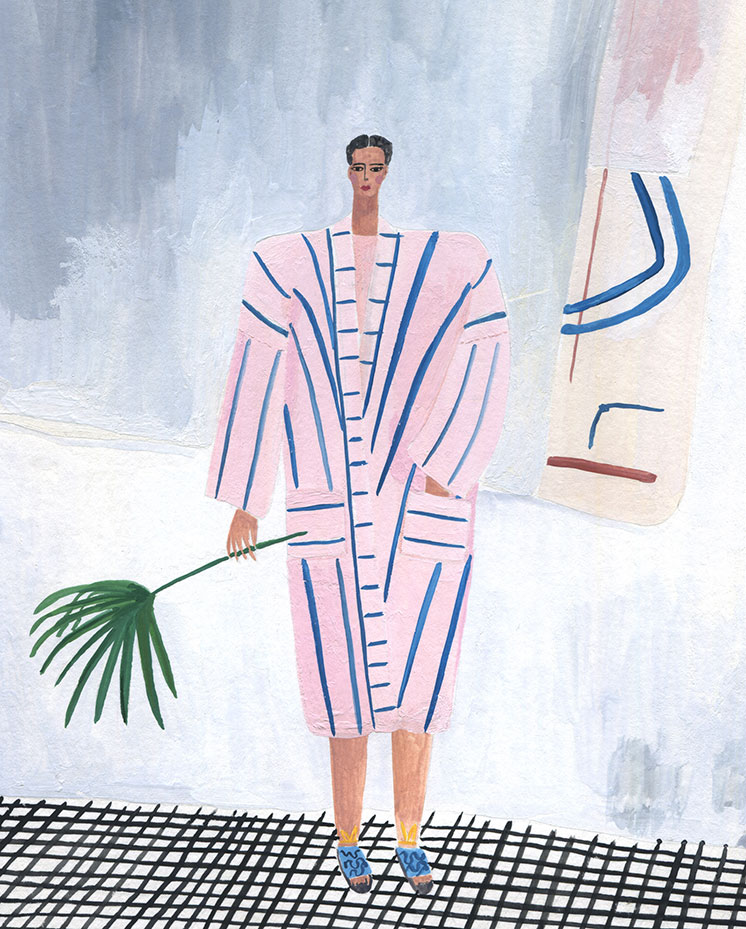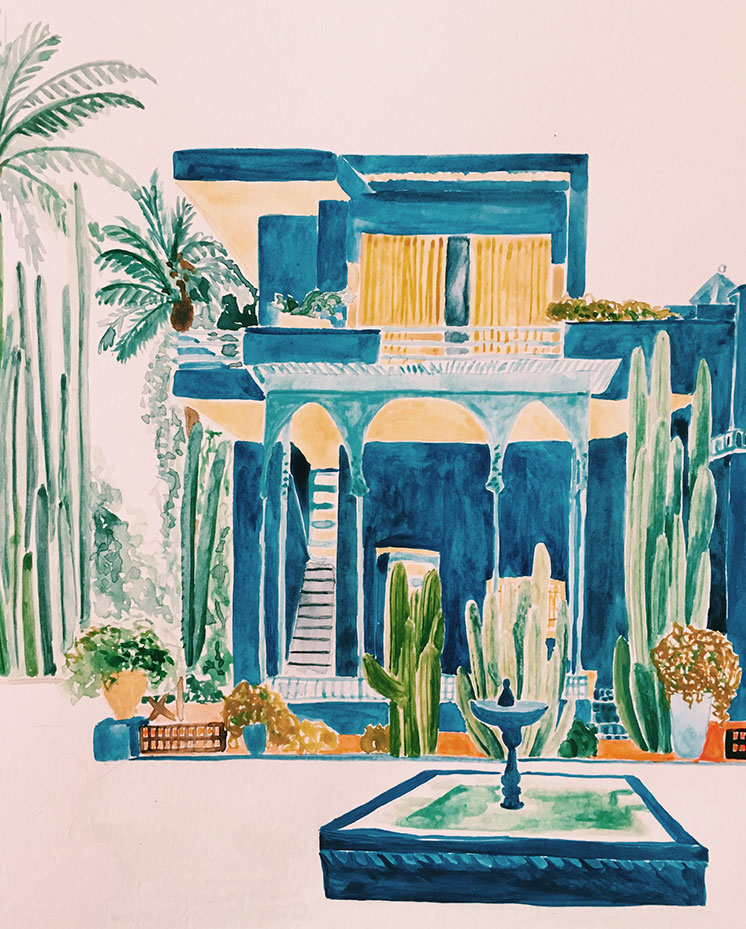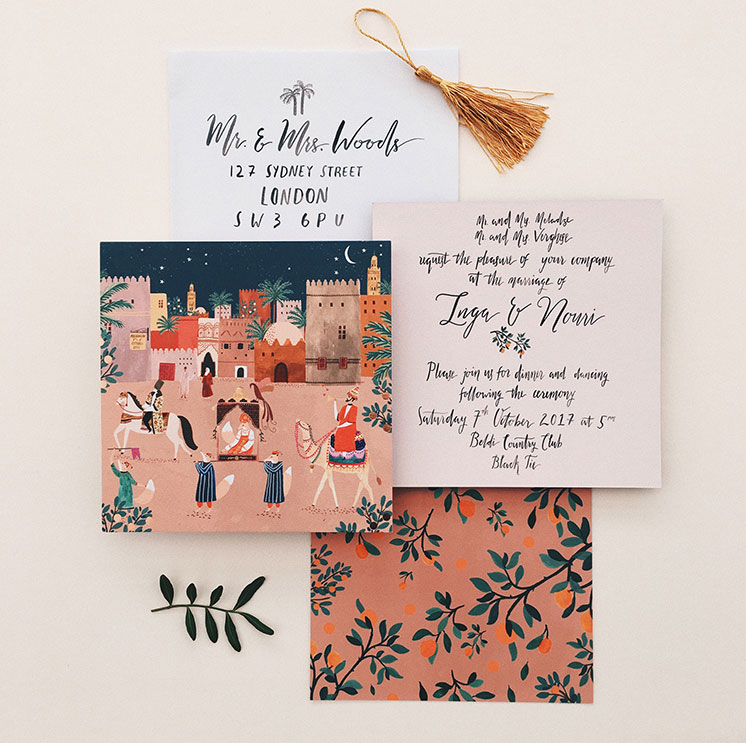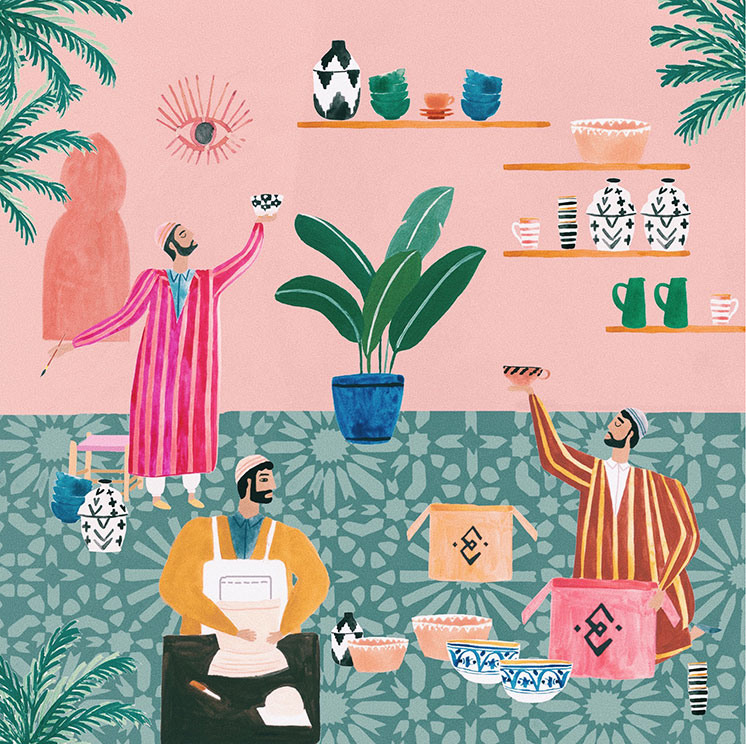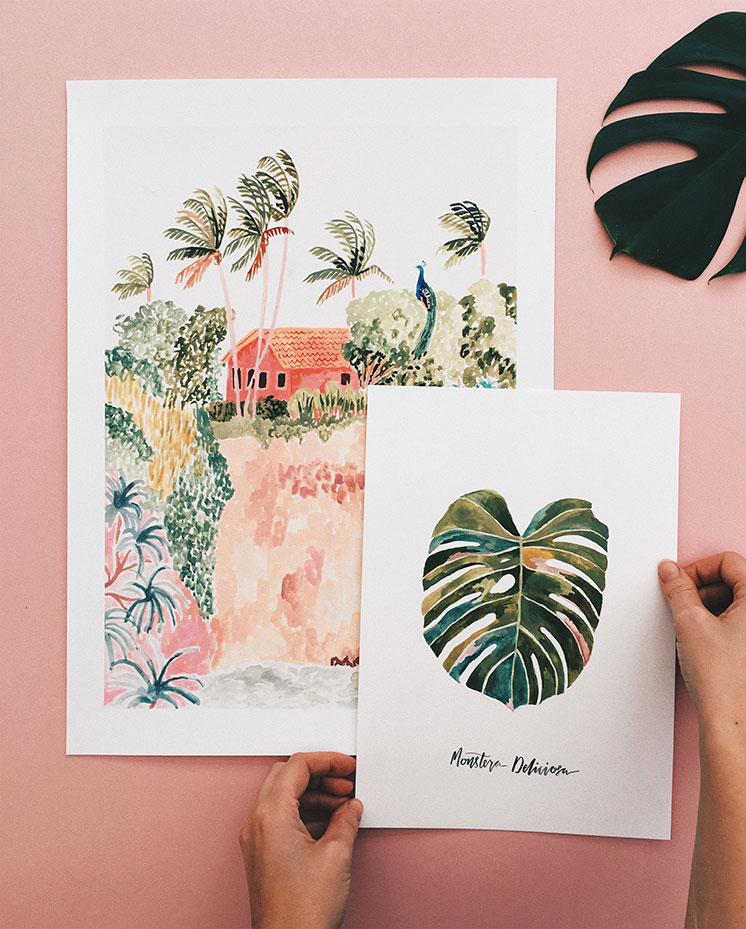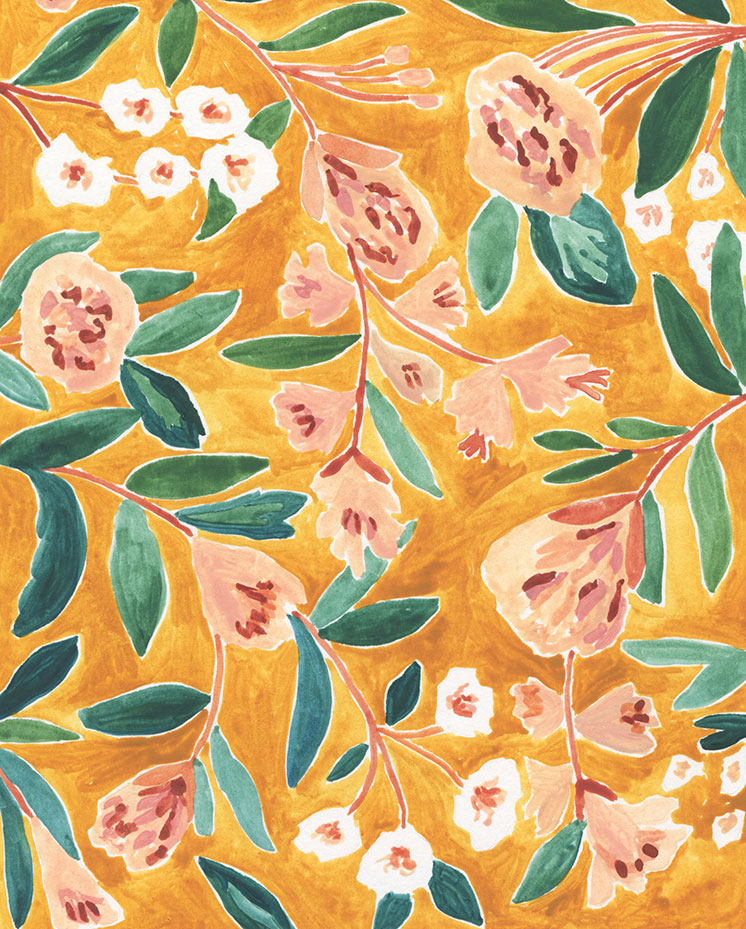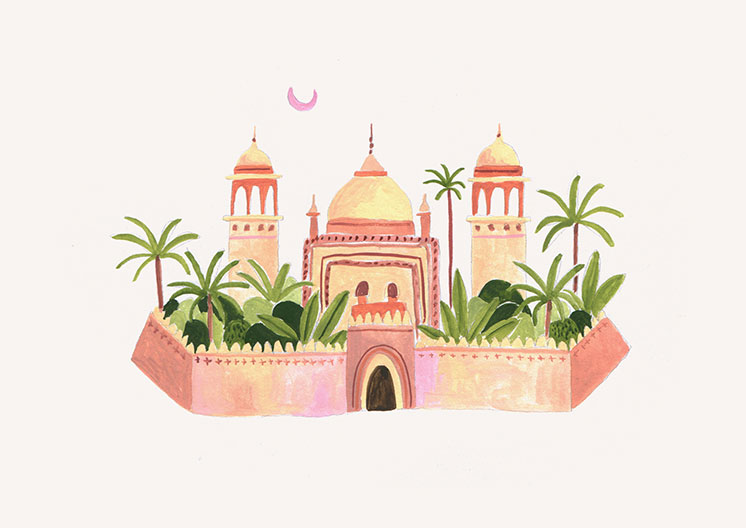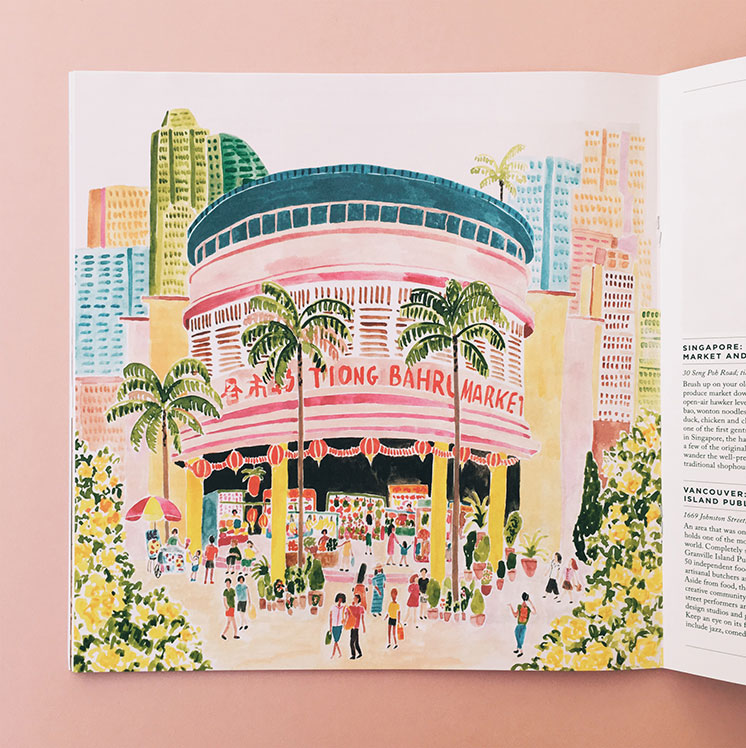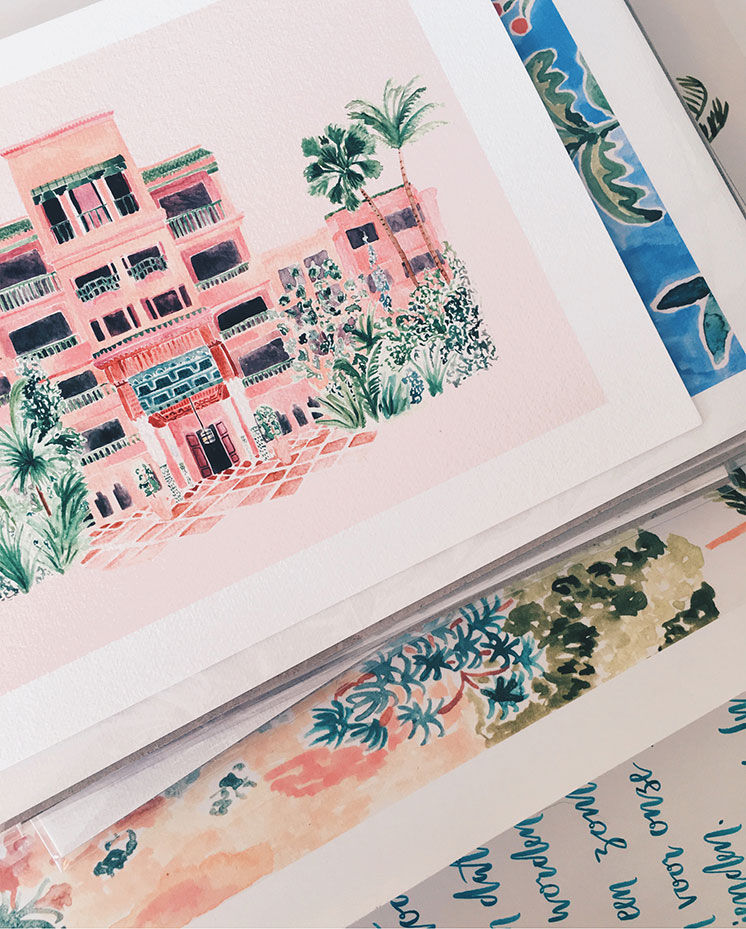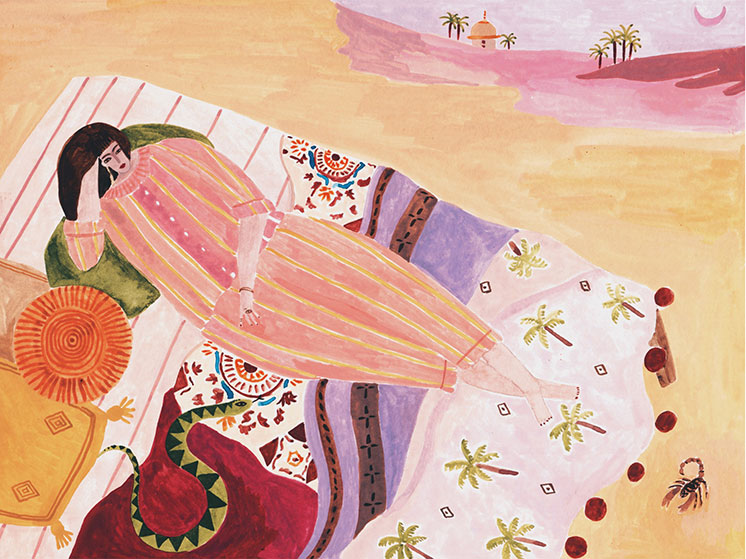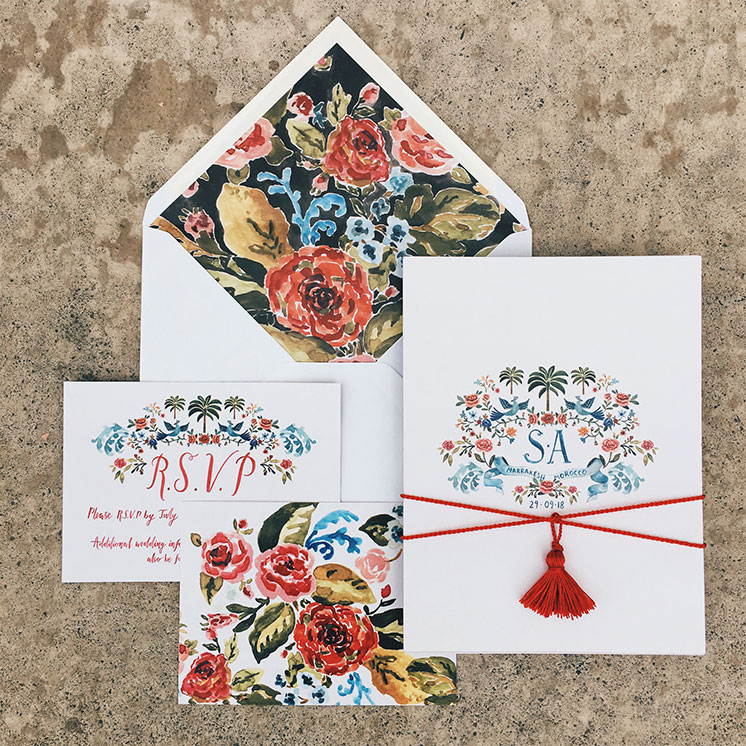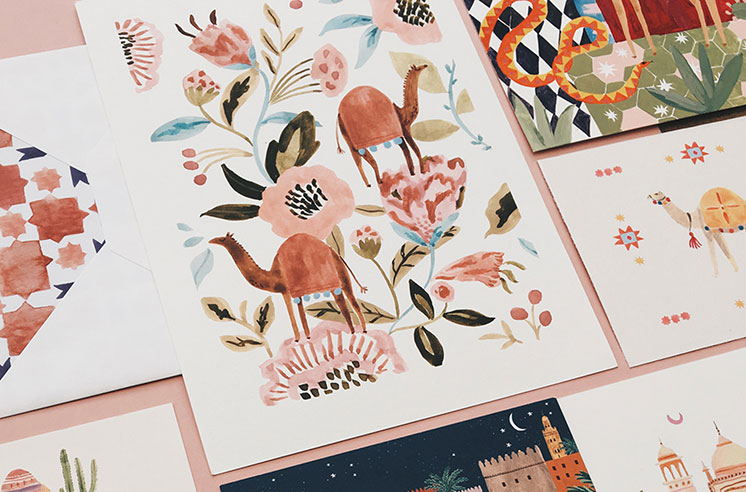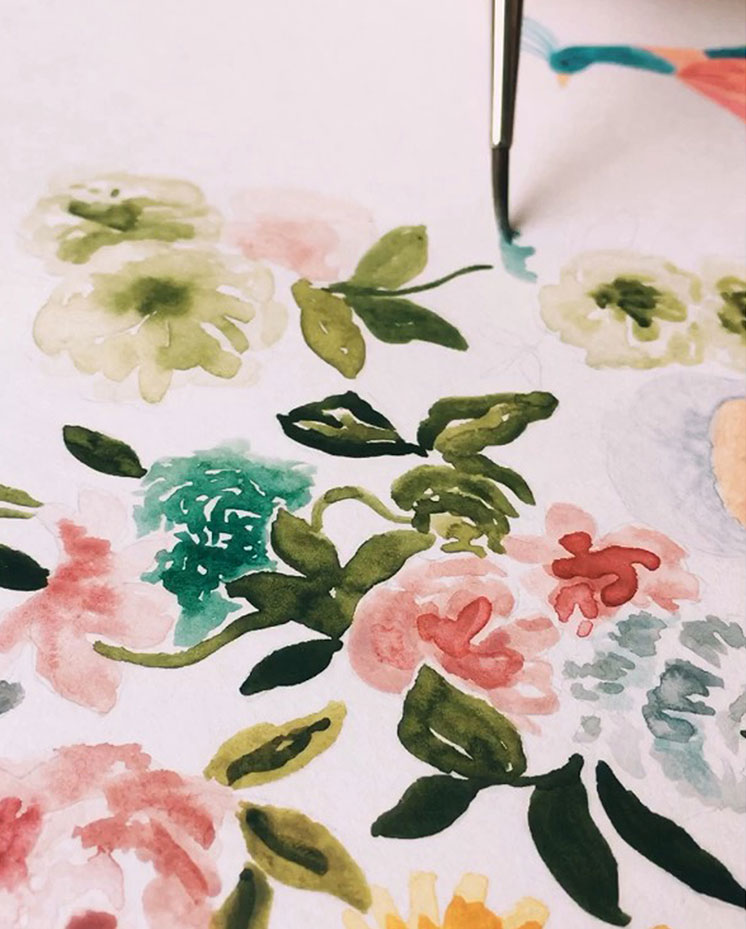It’s our favorite time of the month and we’ve revamped our Illustrator Feature with all new questions customized to each artist so we can get a better understanding of their unique stories. Rosie Harbottle, who created this month’s Book Club poster and bookmark, is UK based illustrator with a passion for travel and culture that’s clearly expressed through her art. She explains in this interview how her style finally found her as she “stopped painting what [she] thought clients wanted to see and started painting what felt natural.” Words to live by! Her work transports us to other countries and leaves us with a serious case of wanderlust! Rosie’s online shop opens this week so make sure to check out all her beautiful work!
Check out the full, inspiring interview with Rosie Harbottle!
1. How did you get your start as an illustrator? How did your illustrative style develop?
After doing a degree in Illustration I started working in-house at Paper & Cloth studio in Northampton. This was a fantastic start in the commercial Illustration world and I learnt so many different skills. At this point, I was mainly hand drawing everything and scanning into Illustrator so my designs were super flexible for clients. After going freelance my style changed pretty much from commission to commission as I was trying to get as much work as possible. I found this quite exhausting after a while as I was quite often drawing what I thought clients wanted to see rather than what came naturally, I definitely lacked direction.
During the same time, I started travelling to Marrakech quite regularly to work with Boutique Souk and began designing wedding stationery. I had been trying out watercolour and gouache and instantly fell in love with painting. It’s then taken a few years of experimenting until I now feel like my style has found me. I stopped painting what I thought clients wanted to see and started painting what felt natural, it’s evolved organically.
2. How do your experiences (your childhood, traveling to Morocco) influence your illustrations? Where do you turn for inspiration?
I grew up surrounded by art and pattern as my mother is a textile artist who studied fashion. She has a great love for the Arts & Crafts movement and makes everything by hand, she has a huge collection of fabrics which has undoubtedly inspired me from an early age. Travelling in general always inspires me but Morocco captivates me, the colours, smells, sounds and light is just so enchanting. I also recently travelled to Rajasthan which had a similar effect on me. I’m so inspired by historical and folk art from different countries and cultures, I also think I draw inspiration from how situations and experiences feel as well as visually which is why travelling/new experiences are so important to my work.
3. Do you ever get stressed when you get a commission to do work for someone that doesn’t necessarily fit your personal brand?
As I mentioned, I used to say yes to every commission which in the end nearly killed my creative mojo. Now I feel happy with the direction my art is going and feel my brand is much more clear so in turn, I try not to take on work that doesn’t quite fit my aesthetic.
4. How much value do you place on attending art or design school?
For me, art school was instrumental in helping me to cultivate my passion. I had tried two different courses before doing an Illustration degree. I originally thought I wanted to be a teacher so started a degree in that with art & design. Soon I realised it wasn’t for me and ended up leaving and going travelling to South East Asia. I came back and decided to pursue Graphic Design as I thought it was a more ‘sensible’ option than fine art and I’d more easily get a job at the end of it. I hate that in my late teens early twenties every adult around me was putting pressure on me to decide on a career that was ‘safe’. The course wasn’t right for me and I ended up being drawn to the Illustration studios and knew straight away that was what I wanted to persue.
For some people they know exactly what direction they want to go in from an early age and find an art style early on, perhaps for them art school isn’t necessary, but for me personally it allowed me to experiment and instilled in me a passion for drawing, working to briefs and following a path that felt right for me whether it was ‘safe’ or not.
5. As a child, what did you tend to draw? Today, what subject matter do you prefer to illustrate?
Every Friday in Primary School we had anthology afternoon where we would illustrate a poem, it was my favourite part of the week and remember drawing everything and anything! Now my favourite things to illustrate are palms, camels, tropical scenes and Arabic buildings, anything that transports me to far off lands.
6. You mention in your bio that you grew up in a very creative family. How has the creativity in your family and your childhood influenced who you are today?
Me and my siblings were very much encouraged to explore our creativity. Along with making, drawing and creating, I used to play saxophone and piano and dabbled in banjo and guitar as well as taking dance classes. Where we used to live in the north of England, as a child there was a big group of us, more like an extended family, every Saturday our parents would take us to the Arts Centre where there was often music and creative classes. We also would all go camping every year to the Lake District where we could run free, make dams and sing around a campfire. Quite a magical childhood really which I’ve tried to carry on into adulthood. There’s nothing better than a campfire with friends, exploring nature and the feeling of complete freedom.
The downsides being that I hate repetition, I love change and want to be doing everything all of the time – not easy traits for my fiancé to live with!
7. Have you had any major setbacks on the road to where you are now and how did you overcome them?
After moving to Northampton to work with Paper & Cloth, even though it was a dream job I realised I needed to live back near the sea for my soul. I thought it was career suicide to leave and to move back to Devon but I went with my gut. I had to move back in with my parents and I found a job with a print company which did not fulfil me creatively but I met some wonderful people who are now lifelong friends. After 6 months I got fired which was a pretty low point as I didn’t have a clue what I was going to do! My dad thought it was the best thing that could have happened and in his usual cheery way said to me “Great! Now you can do what you really want to do!”
Without the support of my parents, there’s no way I’d be now working for myself. I worked hard in getting my portfolio up to scratch and writing to as many different studios as I could find asking if they had any freelance projects, that’s when I began working with Tigerprint in their London studio, I would travel up and work for a couple of weeks at a time as well as remotely. After about a year of working for myself and working around the clock, I could finally afford to move out and stand on my own two feet.
8. Social media gives people a much larger platform to display their work. What are the pros and cons of being so visible?
Social media has been invaluable in showcasing my work and reaching new clients. It allows artists to communicate the many different layers of their practice, retain complete control in curating work and I love how many people I’ve met through Instagram. It’s so lovely to have an online community that supports each other and I’ve learned so many tips and advice on running a business, materials to try and there’s tons of inspiration to be found!
The downsides are that I can sometimes feel overwhelmed and end up in the comparison trap in thinking so and so’s work is better or beat myself up if I haven’t posted in a few days. I often feel the pressure to ‘keep up’ with how much work I put out there which funnily enough usually means I end up having a creative block. There’s definitely a balance to be found and sometimes the balance is off so I take a few days or a week to step back and focus on what I’m doing and that usually helps.
9. Where do you see yourself in the future and what do you hope to accomplish with your career?
We’re currently trying to find a barn to convert with some land so we can have a little smallholding/ a space to host workshops/retreats/ creative space which I hope to interlink into my practice.
In terms of my career, I would love to collaborate with more creative brands, design a homewares collection and try and find a way to travel with my work. Above all I want to go in a direction where I’m still enjoying painting and producing work that I’m proud of and work that I hope will inspire others.
Huge thanks to Rosie Harbottle for agreeing to this interview. Check out her website and Instagram to see more of her lovely artwork.




